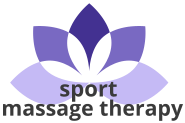Techniques for LDM
Manual lymphatic Drainage – Techniques
MLD consists of these techniques which may be combined with the skin being moved rather than stroked.
Stationery circles –
The fingers are placed flat on the skin and it is moved either in the same place as stationary circles or in continuous spirals. The manipulations are used mainly for treating the neck, face and lymph nodes. Stationary circles are varied on the body and extremities by making circles – 5 circles in one spot, – hand on hand or with either fingers placed next to each other. In the latter case the fingers turn together in the same direction to move the skin in circles or alternating. The direction of pressure is determined by the lymph drainage. Each of these circles is performed with a smooth increase of pressure into the tissue and a smooth decrease of pressure.
Pump technique –
With this technique the palms are face downward. The thumb and fingers move together in the same direction, moving the skin oval circles. This movement of thumb and fingers is controlled by the exaggerated movements of the wrist. The fingers are outstretched; the fingertips have no function in this technique. The wrist moves like a hinge. The forward motion of the fingers is carried with pressure [as the wrist drops], the forward motion of the wrist is without pressure.
Scoop technique –
In contrast to the pump technique with the scoop technique the palm is facing upward. Vodder describes the movement as ‘giving motion’. The rotating wrist creates a corkscrew movement of the wrist-hand unit. The fingers are outstretched and swing towards the body during the pressure phase. Pressure is on the inward part of the stroke with no pressure on the outward stroke. The pivot point is the metacarpal-carpal joint of the index finger, all the metacaro-phalangeal joints are in contact with the skin during the pressure phase.
Rotary technique –
This is used on relatively flat areas of the body and consists of various individual movements. The wrist moves up and down. As it moves down it swings from the outside towards the inside. The whole palm lies on the skin and turns it on an inward spiral. The thumb also makes circular movements in the direction of the lymph drainage of the skin. These are performed during the pressure phase. In the pressureless phase the wrist is raised and the four outstretched fingers move on and the thumb slides inward. Wrist moves down, the whole hand touches the skin and it begins to apply pressure.
Stationary circles – used on neck, face & lymph nodes
- Stimulates lymph nodes to aid removal of waste from surrounding tissues
- Helps reduce inflammation
- Stimulate tissue regeneration
- Encourages the movement of interstitial fluid
- Encourages removal of metabolic water, toxins and water
Pump technique – used on limbs and sides of body
- Encourages the flow of lymph and interstitial fluid to the lymph nodes
- Transports metabolic waster, toxins and trapped water towards the lymph nodes
- Helps reduce inflammation
- Stimulates tissue regeneration
- Reduces scarring
Scoop technique – used on limbs
- Encourages the flow of lymph and interstitial fluid towards lymph nodes
- Transports metabolic waste, toxins and trapped water towards lymph nodes
- Helps reduce inflammation
- Reduces scarring
- Stimulates tissue regeneration
Rotary technique – used on flat areas including the back
- Transports metabolic waste, toxins and trapped water towards lymph nodes
- Helps reduce inflammation
- Stimulates tissue regeneration
- Reduces scarring
- Encourages flow of lymph and interstitial fluid towards lymph nodes
Thumb circles – used on small area inc elbows toes & fingers
- Transports metabolic waste, toxins & trapped water towards lymph nodes
- Helps reduce inflammation
- Stimulates tissue regeneration
- Reduces scarring
- Encourages flow of lymph and interstitial fluid towards lymph nodes
